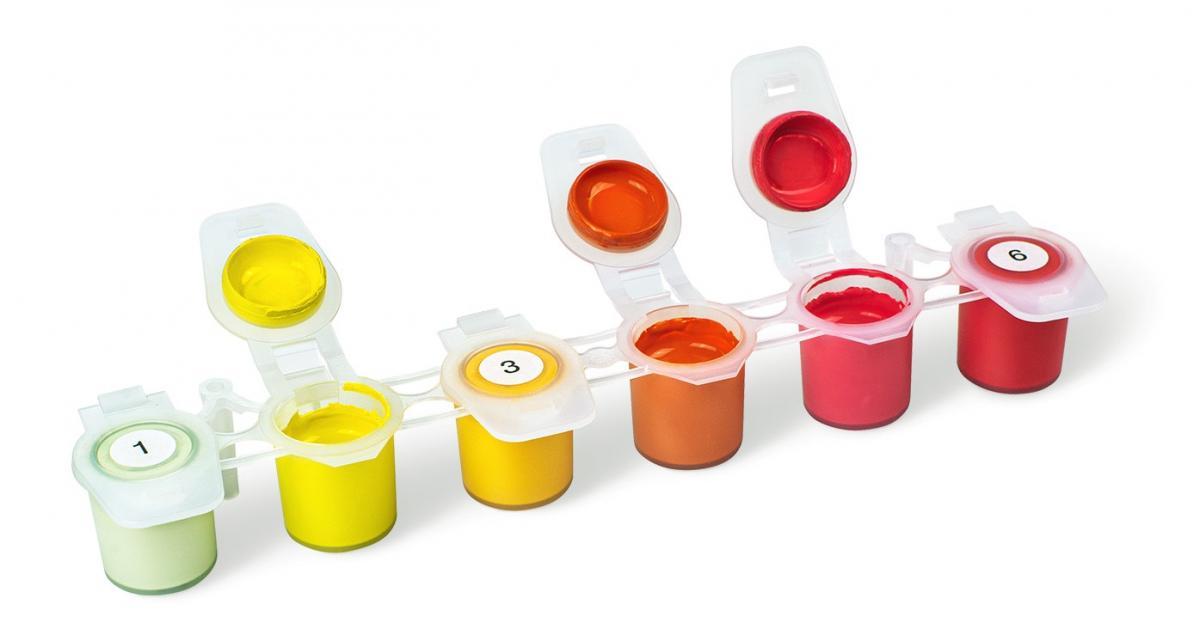Disposing of acrylic paint: how to do it safely and in an environmentally friendly way!

-
By
Lisa B.
Painting with acrylic paints is creative fun that promises beautiful results. But what happens to the acrylic paints when they are no longer suitable for painting due to their age, for example? Then it is important to dispose of the acrylic paints correctly! This article explains how you should proceed when you want to dispose of acrylic paint and gives you tips on how to dispose of acrylic paints in an environmentally friendly and responsible manner.
What happens if I dispose of my acrylic paints incorrectly?
Everyone who paints with acrylic paints or uses them in any other way is responsible for the proper disposal of the paints. This is important because the wrong approach to disposing of acrylic paint can have serious consequences for the environment.
Environmental consequences of incorrect disposal of acrylic paint
If you want to dispose of leftover paint, you might think of simply tipping the still-liquid paint down the sink, pouring it down the toilet or throwing it in the household waste. But that would be disastrous! After all, many paints and varnishes - including acrylic paints - contain substances that are harmful to the environment. The fact that acrylic paints are water-soluble does not necessarily make them completely harmless to the environment.
Incorrect disposal poses the risk of pollutants and microplastic particles entering the soil and groundwater, where they can cause considerable damage. In order to prevent acrylic paint from damaging the ecosystem, correct disposal is therefore essential.
Health risks associated with incorrect disposal of acrylic paints
Inappropriate disposal of acrylic paints can also affect human and animal health under certain circumstances. This is also due to the hazardous ingredients that they often contain. Nevertheless, you don't have to worry about your health when painting with acrylic paints from Schipper! If you use our high-quality paints properly, there is no risk whatsoever
The dos and don'ts of disposing of acrylic paint
Disposing of your acrylic paint is easy with the necessary background knowledge! Our practical tips will help you do just that
What you should avoid at all costs when disposing of acrylic paint
First, let's look at what you should never do when disposing of acrylic paint:
- Pour down the drain/toilet: Due to the potential for water and environmental pollution, paint should never be poured down the drain.
- Put liquid in household waste: Liquid paint residues must not be disposed of in household waste. They must be treated as hazardous waste and disposed of accordingly. As a rule, paint and containers should be disposed of separately. The liquid paint should be taken to a collection point for hazardous waste.
- Dispose of leftover paint open: When the acrylic paint is completely dry, it can often be safely disposed of in normal household waste. In this case, the paint residue can be disposed of together with the container. The container should be sealed.
- Throwing away paint too quickly: Always check first whether your leftover paint can still be used before throwing it away and wasting paint that may still be usable.
.
Dispose of acrylic paints responsibly and in a way that conserves resources
When disposing of acrylic paint, you can of course not only do a lot of things wrong, but also a lot of things right. Essentially, these points are among the clear "dos" when disposing of acrylic paint:
- Let dry: Allow the paint residue to dry thoroughly in a well-ventilated place without a lid, after which you can dispose of water-soluble paints in the residual waste
- Recycle the packaging: Recycle the packaging according to its material, as this is also part of the correct disposal of acrylic paint
- Disposal in hazardous waste: Only dispose of solvent-based or still liquid acrylic paints in hazardous waste

By following these tips when disposing of acrylic paint, you are making an important contribution to reducing waste and, above all, protecting the environment and conserving resources.If you are still unsure whether you are doing everything right, contact local disposal or recycling centers for specific information and instructions on how to dispose of acrylic paint waste in your area
This will help you avoid unnecessary disposal: Store and use acrylic paints safely
Disposing of acrylic paint cannot always be avoided. After all, the lifespan of paints is limited and no product has an infinite shelf life. Nevertheless: Some paints would not have to be thrown away prematurely if they had been stored and used correctly beforehand
In general, you should always store your acrylic paints in a dark, cool place where they are not exposed to direct sunlight. When painting with acrylic paint, make sure not to leave the paint pots open for longer than necessary and check that the lids are tight before storing the paints. This will considerably increase the lifespan of the paints.
If you are working with a color palette for mixing, for example, you should try to only mix as much of a color as you can use in a short time. After all, paint that you have mixed yourself is usually not put back into a sealable jar, but rather disposed of - an avoidable waste.
Conclusion: Responsible use of acrylic paints
If you want to paint with acrylic paints, you also need to consider the issue of "disposing of paints". Because: The correct disposal of acrylic paints is the personal responsibility of the painter and corresponds to active environmental protection. Despite the risks that improper disposal of acrylic paint can entail, it is important to emphasize once again that painting with Schipper acrylic paints does not pose any danger if handled properly. So you can continue to pick up your paintbrush with a clear conscience and enjoy your painting experience with Schipper without any worries!
By the way: The Schipper homepage is always worth a visit. It will take you to all our top products for hobby artists and you can delve deep into our paint-by-numbers themed worlds - have fun!















